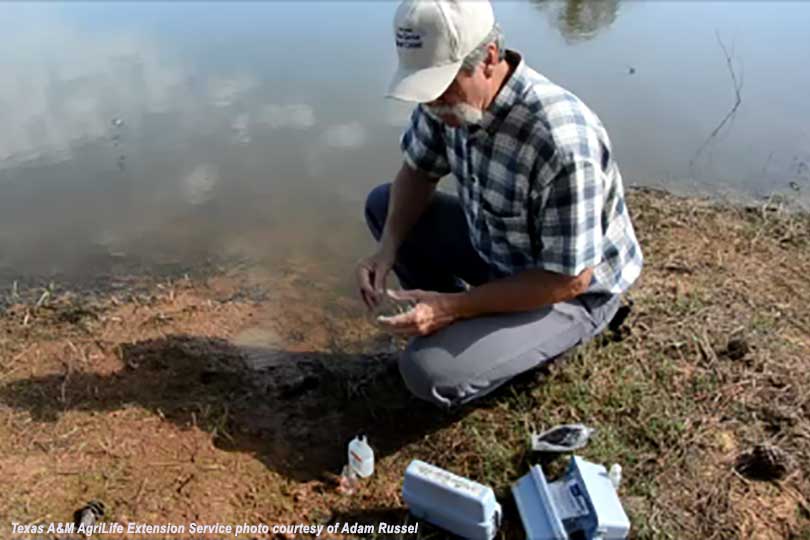The dog days of summer are here, and a Texas A&M AgriLife Extension Service expert says landowners should watch for oxygen depletion in stock ponds.
From June to September, the air is increasingly hot and pond water temperatures climb. Oxygen depletions occur most during this time, according to AgriLife Extension wildlife specialist in Overton Dr. Billy Higginbotham.
Too many pounds of fish, weather and improper aquatic weed control contribute to the oxygen depletion.
Typical ponds, Higginbotham said, can sustain 1,000 pounds of fish per surface acre through the summer months.
Smaller fish aren’t as affected as larger fish by the low oxygen levels.
He recommends checking ponds at daybreak when oxygen levels are at their lowest daily levels. If fish are surfacing for air, the owner should act quickly.
“It’s almost as if they are gasping for air at the air-water interface,” Higginbotham said. “That’s a clear sign of oxygen depletion and the pond owner should act quickly to avoid a complete die-off of their fish.”
According to AgriLife Today, pond owners can produce more oxygen for fish in various ways, including placing a pump in the shallow portion of the pond, controlling aquatic vegetation and investing in an aeration system.
Higginbotham recommends thinning fish populations to reduce the pounds of fish the pond supports going into the mid-summer months.
Weed control efforts should be done gradually, about 15-20 percent of the vegetation at a time and a week break between treatments.
“Watch very carefully as we enter these still, cloudy days, the dog days of summer,” Higginbotham said. “Be mindful of oxygen depletion and the possibility of losing fish populations.”

